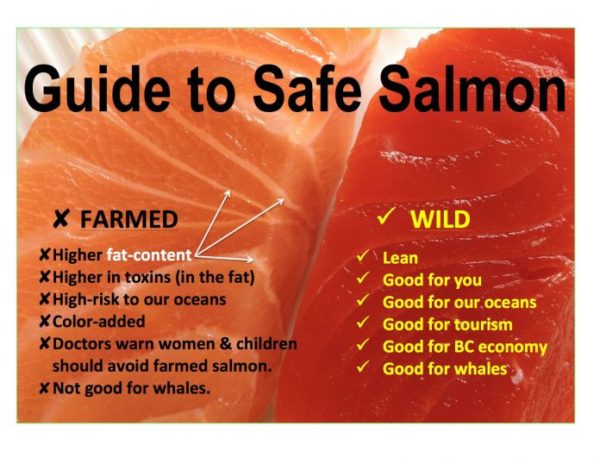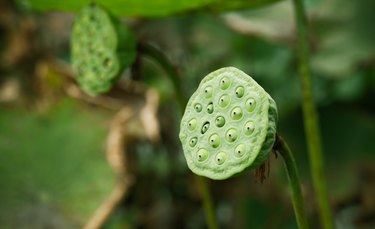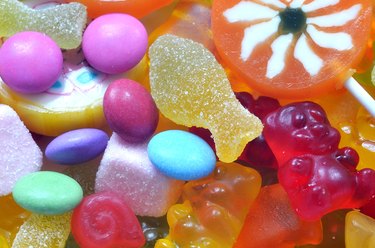There are many kinds of salmon. There are five kinds of Pacific salmon and two kinds of Atlantic salmon. Atlantic salmon is typically farmed, while Pacific salmon species are primarily wild-caught. Wild-caught Pacific salmon are typically considered to be the healthiest salmon.
Wild salmon is generally considered to be the best salmon to eat. Because wild Atlantic salmon isnt sold, this means that the healthiest salmon is wild Pacific salmon.
Salmon is one of the most popular fish for its rich flavor, omega-3 fatty acids and versatility. However, with many different types of salmon on the market choosing the right salmon can get confusing. When it comes to buying salmon, two key factors to consider are sustainability and safety. In this comprehensive guide, we’ll go over how to select salmon that is sustainable for the environment and safe for your health.
Why Sustainability Matters
Salmon farming and fishing practices can damage marine ecosystems if not done responsibly. Choosing sustainably raised salmon helps protect habitats and prevent overfishing of wild salmon populations. The Monterey Bay Aquarium’s Seafood Watch program has created guidelines on the most sustainable salmon options. Their top recommendations include:
-
Wild-caught Alaskan salmon – All species from Alaska are abundant, well-managed and caught withresponsible methods
-
Wild Pacific salmon – Most wild salmon from Washington, Oregon and California are good choices. Avoid at-risk Chinook from Puget Sound and Columbia River.
-
Some certified farmed salmon – Look for the Aquaculture Stewardship Council (ASC) label.
Seafood Watch gives these fisheries a “Best Choice” rating for minimizing environmental impact. Buying from them supports ethical fishing practices.
Prioritizing Your Health
In addition to sustainability, it’s crucial to pick salmon that’s safe for you to eat in terms of contaminants like mercury, antibiotics, and pesticides. Here are tips for choosing healthy salmon:
-
Go wild – Farmed salmon can have higher antibiotic, PCB and pesticide residue compared to wild varieties. Wild salmon eat a natural diet and roam freely.
-
Buy Pacific – Salmon from the Pacific Ocean are lower in contaminants than Atlantic salmon.
-
Choose U. S. or farmed in Canada; these have stricter rules on the use of antibiotics and pesticides than salmon farmed in other countries.
-
Check for certifications. Look for labels from the Marine Stewardship Council, Alaska Seafood, the ASC, or the MSC.
-
Eat a variety – Alternate between types of salmon to minimize exposure to any single contaminant.
The Safest Species of Wild Salmon
If buying fresh wild salmon, these are great sustainable and safe options:
Alaskan Salmon
All wild salmon species from Alaska—including Sockeye, Coho, Chinook, Pink, and Chum—are ideal choices both environmentally and for your health. With pristine, tightly monitored waters, Alaska salmon is consistently rated a top choice. It has very low contaminant levels, providing omega-3s and protein with minimal risk.
Wild Pacific Salmon
Wild salmon caught in the Pacific ocean along the West Coast—like King, Sockeye, Coho, Pink, and Chum—is also rated highly sustainable. Avoid at-risk Puget Sound Chinook and upper Columbia River Coho. Pacific salmon has slightly more contaminants than Alaska salmon due to more urbanized habitats, but it remains low-risk overall.
Canned Wild Pacific Salmon
Opting for canned wild Pacific salmon is an easy, economical way to get sustainable salmon. Canned salmon has bones and skin removed, reducing potential PCBs. Choose “Alaska Salmon” or brands like Vital Choice that use only wild, sustainably caught Pacific salmon.
The Safest Farmed Salmon
Farmed salmon can be a safe option too when properly raised. Here are responsible choices:
U.S. Farmed Atlantic Salmon
Farmed Atlantic salmon from Maine, Washington and other U.S. states is a safer bet than imported. U.S. regulations prohibit certain pesticides and limit antibiotics. Farms use more contained systems. ASC-certified American farmed salmon meets strict sustainability standards.
Canadian Farmed Atlantic Salmon
Canada’s farmed Atlantic salmon also must meet environmental standards under ASC certification and regulatory programs. Antibiotic use is limited. Canadian farmed salmon is rated a Seafood Watch “Good Alternative.”
Other ASC-Certified Farmed Salmon
Farmed Coho salmon and Atlantic salmon from Chile, Norway, New Zealand and Australia with the ASC blue label mean responsible farming practices were used to minimize impacts. This certification ensures lower contaminant levels.
The Safest Canned & Smoked Salmon
For quick meals, consider these safe packaged salmon options:
-
Canned wild Alaska or Pacific salmon
-
Smoked salmon from Alaska (sockeye is leanest)
-
Salmon jerky from Alaska
-
Canned sockeye, Coho and pink farmed salmon with ASC certification
-
Nova smoked salmon farmed in Canada, Scotland or Norway
Choosing sustainable, low-contaminant salmon does require a bit more diligence when shopping. But with so many healthy, ethical salmon choices available, you can feel good about serving this tasty omega-3-rich fish often. Look for seafood watch recommendations, certified labels and Alaska wild salmon to easily find the safest, most sustainable salmon for your family.

Atlantic vs. Pacific Salmon
Atlantic salmon and Pacific salmon both live in regions around the northern United States. But any Atlantic salmon you find in your local supermarket likely comes from a farm.
Video of the Day
The Atlantic salmon and Pacific salmon sold throughout the United States were all once wild-caught. However, wild Atlantic salmon is now considered endangered because its population is declining. Catching wild Atlantic salmon is consequently banned.



Farmed Atlantic salmon are considered substantially different from their wild counterparts. Its fine to eat farmed Atlantic salmon, though most people dont consider this the best salmon to eat.
Pacific salmon can be obtained wild-caught or farmed. The Alaska Department of Fish and Game says that there are five main types of Pacific salmon:
- Chum or dog salmon
- Coho or silver salmon
- Chinook or king salmon
- Pink or humpy salmon
- Sockeye salmon
Fresh, wild-caught Pacific salmon is usually only sold between June and September.
Choosing the Healthiest Salmon
The main difference between farmed and wild salmon involves how the fish is raised. Farmed salmon are raised in pens and fed fishmeal, fish oil and other protein-rich foods. In comparison, wild salmon roam between freshwater and the open ocean. They eat a varied natural diet of zooplankton and smaller fish.



The differences in how these fish are raised influences their nutrition. As per Harvard Health Publishing, salmon from both wild and farmed sources is high in omega-3 fatty acids, which are good for you.
But the exact health benefits of farmed salmon depend on what the salmon ate. Farmed salmon typically have higher levels of omega-3 fatty acids. Unfortunately, they also have larger amounts of unhealthy saturated fats compared to wild-caught salmon.
This difference is primarily caused by the food that the farmed salmon is fed throughout its life. The Journal of Scientific Reports published a study in February 2016 that found farmed salmon that were mostly fed fishmeal from land had less healthy unsaturated fatty acids and more saturated fats than wild-caught fish and farmed fish that were fed fishmeal from the sea.
The American Heart Association says that whenever you can, you should eat less saturated fat and more healthy unsaturated fat. Many people think that wild-caught salmon is the healthiest salmon because farmed salmon is more likely to have more saturated fat than wild salmon. Farmed salmon may also lack certain essential nutrients present in wild-caught fish.
If you can’t find wild-caught salmon, though, both Harvard Health Publishing and the study in the Journal of Scientific Reports say that farmed salmon is still a good choice. The reason for this is that both farmed and wild salmon have more healthy unsaturated fats and less unhealthy saturated fats than steak, chicken, and other common protein sources.
Eating fish like salmon twice a week can have benefits for your cardiovascular health, preventing issues like heart disease and stroke, thanks to the unsaturated omega fats.
Omega-3 fatty acids are found in a lot of seafood, but farmed and wild salmon are especially healthy because they are low in mercury.
HOW TO BUY SALMON | What Salmon Should You Buy at the Grocery Store?
FAQ
What is the healthiest salmon to buy?
What is the least toxic salmon?
What is the least polluted salmon?
Which salmon has the least mercury?
What is the best salmon to eat?
Wild salmon is generally considered to be the best salmon to eat. There are many different types of salmon — specifically, five types of Pacific salmon and two types of Atlantic salmon. Atlantic salmon is typically farmed, while Pacific salmon species are primarily wild-caught.
Which salmon should I buy?
1. Wild or Farmed? The first choice you should make is whether to buy wild salmon (and all Alaska salmon is wild-caught) or farmed Atlantic salmon (fishing wild Atlantic salmon is illegal in the United States).
What is the most sustainable type of salmon?
The most sustainable type of wild salmon is produced in Alaska, where the runs are healthy and well managed, according to the Environmental Defense Fund. The salmon population isn’t in danger of being depleted, and to prevent overfishing, boats are legally restricted in the amount of fish they are permitted to catch.
Where can I buy healthy farmed salmon?
Several healthy farmed salmon options are available at major grocery stores. Whole Foods offers the most comprehensive seafood policy and are my first choice when buying seafood. However, you can buy healthy farmed salmon at Publix, Costco, and Trader Joes as long as you read labels.
